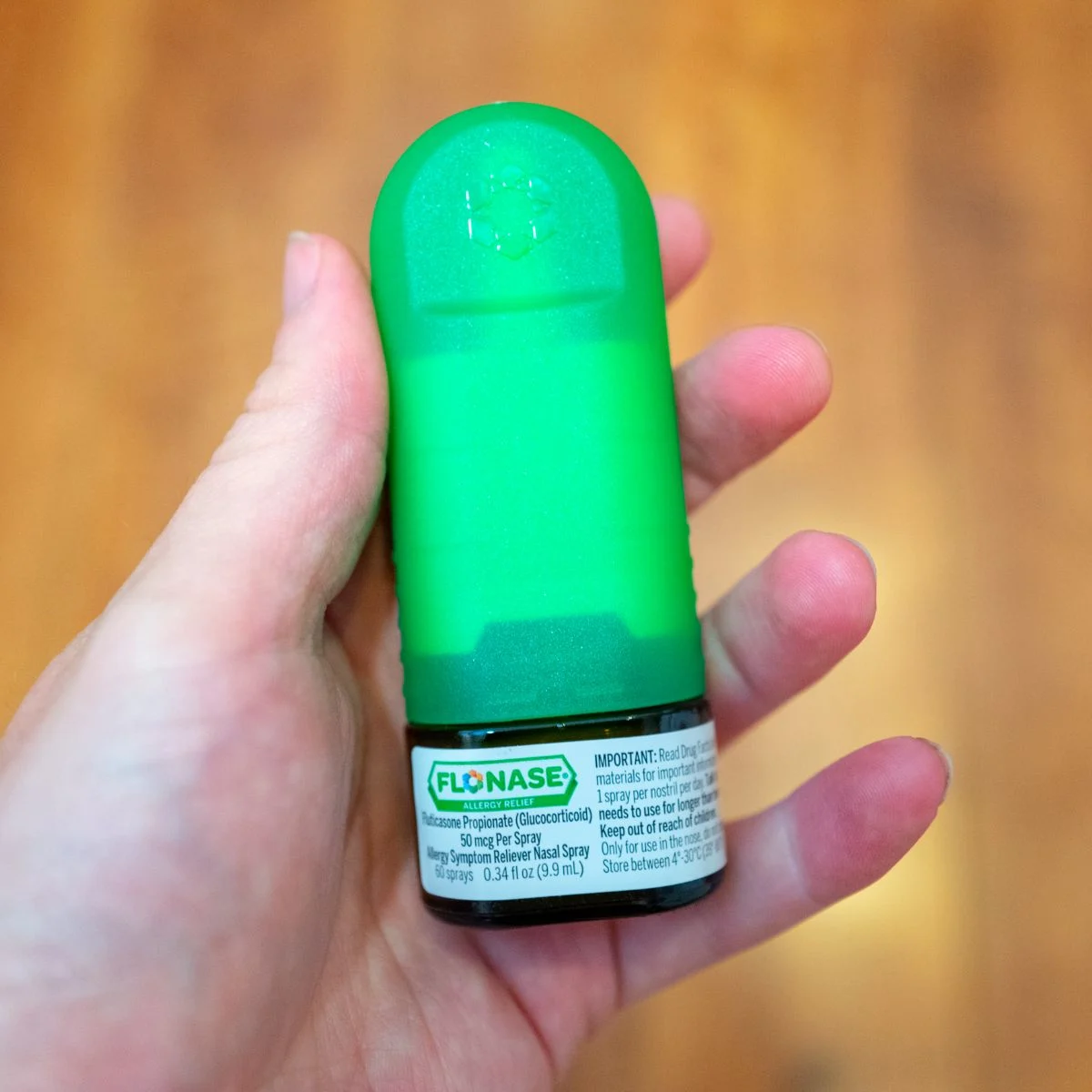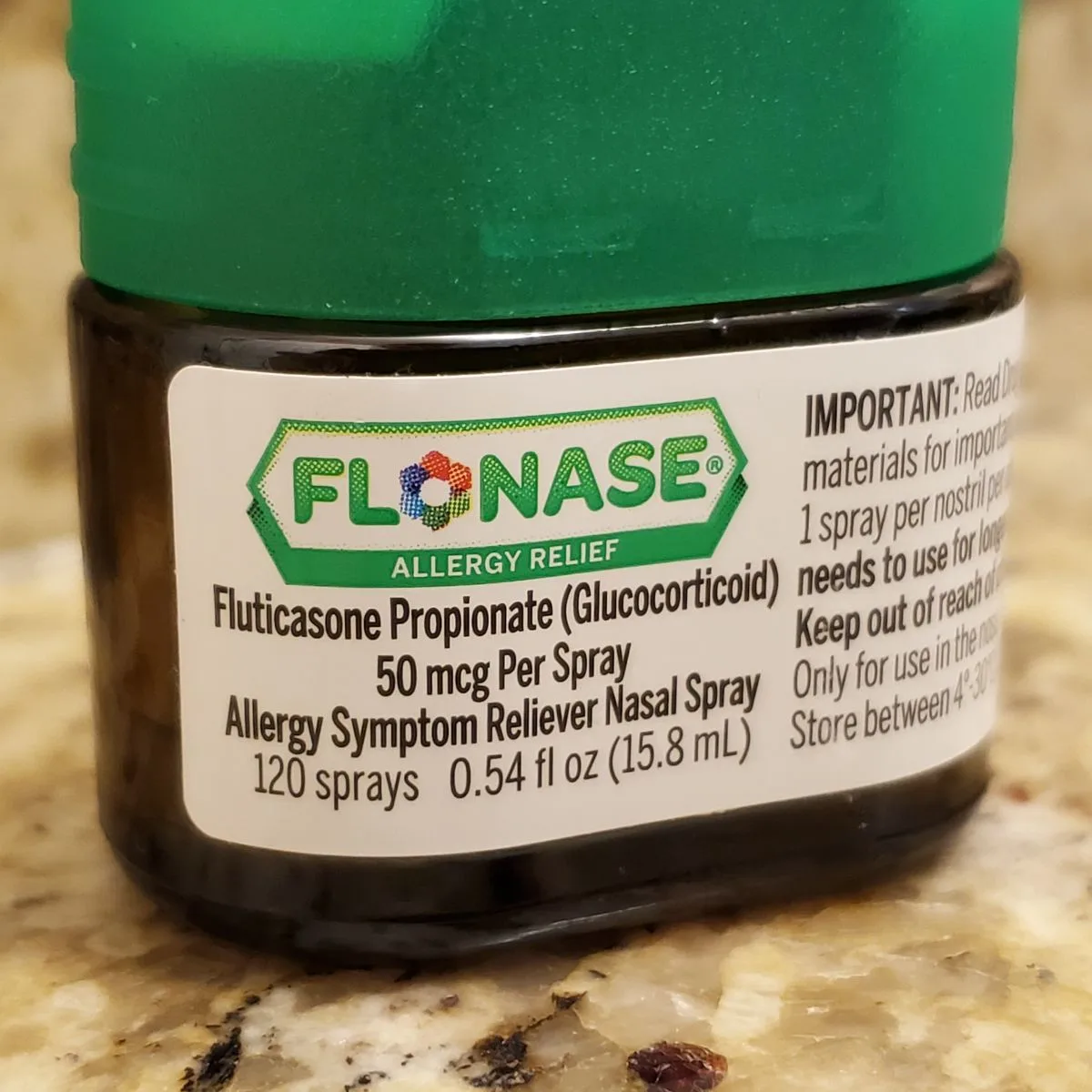Azelastine vs Flonase (Fluticasone) – Which One Is The Best?
Introduction
Hay fever, also known as seasonal allergic rhinitis (SAR), is an inflammatory condition of the upper airways which happens in response to exposure to airborne allergens in sensitized people.
The financial impact is significant, with the indirect costs estimated at approximately $5 billion and direct costs estimated to be over $8 billion, including loss of productivity.
SAR symptoms, that typically come on suddenly and last as long as a sensitized individual is exposed to the allergen, may include:
- coughing;
- a runny nose;
- nasal congestion;
- itchy nose and/or throat;
- sneezing.
SAR can also:
- cause abnormal development of the teeth and mouth from chronic mouth breathing;
- result in eye infections because individuals rub itchy eyes;
- worsen snoring and the tendency to have sleep apnea (a sleep disorder characterized by pauses in breathing during sleep) in adults;
- make people tired and run down due to poor quality sleep;
- result in sore throats;
- result in a husky voice;
- result in a bad breath;
- impair learning and behavior in kids;
- make people more prone to sinus infections;
- make asthma more difficult to control.
There are many methods to treat SAR, depending on how severe the symptoms are.
Here is a comparison of two popular medicines:
Azelastine
Azelastine hydrochloride nasal spray 0.1 percent solution is a 2nd-generation intranasal antihistamine. It is available as the brand-name drug Astepro.
It has structural and chemical differences that distinguish it from currently available antihistamines.
Flonase

@Getty
It contains fluticasone propionate, a medium-potency man-made corticosteroid (specifical glucocorticoids) that has a very high affinity for the corticosteroid receptors.
Alcohol
Avoid alcoholic beverages while taking these medicines since you are amplifying your risk of damaging the liver and kidneys, and it can lead to high blood pressure, dehydration, depression, allergic reactions, chest pain, and gastrointestinal problems.
Breastfeeding
It is not known whether azelastine passes into breast milk or if it could affect in a negative way a nursing baby.
Therefore, tell your healthcare provider if you are breastfeeding an infant before using the antihistamine.
It is not known whether fluticasone is excreted in human breast milk and if it can affect the breastfed baby.
Let your healthcare provider decide whether you should discontinue using the nasal corticosteroid if you are breastfeeding an infant.
Pregnancy
It is not known whether azelastine will harm an unborn baby.
Hence, before using the nasal spray, tell your healthcare provider if you are pregnant.
There are no well-adequate studies regarding the safe use of fluticasone propionate in pregnant women.
Talk to your healthcare professional before using the nasal corticosteroid.
Precautions & Warnings
Azelastine
Throw away this antihistamine after you have used 200 sprays, even if there is still medicine left in the bottle.
If the spray gets in your mouth or eyes or on your skin, rinse with cool water.
Do not use the nasal spray if you have:
- eye irritation;
- bad nosebleeds;
- very bad nose irritation.
Flonase

@Getty
When using the nasal spray, it is essential to:
- before using the nasal spray, it is suggested to blow your nose in order to clear the nasal passages;
- tilt your head down while spraying into the nose;
- shake the bottle gently before each use;
- close your other nostril and sniff after you have pressed the pump;
- avoid eye contact.
ALSO READ: Alaway vs Zaditor – Which Is The Best OTC Antihistamine Eye Drops?
Drug Interactions
Azelastine may interact in a negative way with the following drugs:
- Zyrtec (cetirizine);
- Lyrica (pregabalin);
- Cymbalta (duloxetine);
- Benadryl (diphenhydramine).
Flonase may interact in a negative way with the following drugs:
- atazanavir;
- cobicistat;
- nelfinavir;
- ketoconazole;
- indinavir;
- itraconazole (an antifungal medication);
- delavirdine;
- clarithromycin;
- conivaptan;
- fosamprenavir (a medication for the treatment of HIV infections);
- idelalisib (Zydelig);
- lopinavir/ritonavir;
- nefazodone;
- boceprevir;
- amprenavir;
- mibefradil.
Dosage
For Azelastine, 1 spray per nostril two times per day is the most often recommended dose.
Note – when you use the nasal spray for the first time, you must prime the spray.
For Flonase, the recommended dosage is 2 sprays in each nostril once a day.
ALSO READ: Tolnaftate vs Clotrimazole
Side Effects
Azelastine
Common side effects include:
- upper respiratory tract infection;
- fever (high temperature);
- ear infection;
- bitter taste in the mouth;
- a sore throat;
- nose pain;
- skin rash;
- vomiting;
- a cough;
- nosebleeds;
- drowsiness;
- sneezing;
- headache.
Less common side effects include:
- fussiness in a child;
- drainage from the ear;
- trouble hearing;
- ear pain;
- worsening allergy symptoms.
Fluticasone Propionate
Common side effects include:
- fever (high temperature);
- nosebleed;
- headache;
- a sore throat;
- nausea;
- nasal irritation;
- sneezing;
- nasal dryness;
- change in taste or smell.
Less common side effects include:
- hives;
- increased thirst;
- skin rash;
- chills;
- difficulty breathing;
- swelling of the face, mouth, eyelids, or lips;
- tingling of the hands;
- severe nosebleeds;
- white spots in the nose;
- a persistent sore throat.
Mechanism of Action
Azelastine works by inhibiting the release of histamine from the cells in the body.
In addition to acting as a histamine antagonist, this medicine also inhibits the production of free radicals, leukotrienes, and cytokines.
After intranasal administration, its systemic bioavailability is around 40 percent.
Fluticasone propionate works by reducing the human body’s response to specific allergens.
Uses
These nasal sprays are indicated for the treatment of both nonallergic vasomotor rhinitis and seasonal allergic rhinitis.
ALSO READ: Nasacort vs Rhinocort – Which Is Better?
Azelastine vs Flonase (Fluticasone) – Which Is The Best Nasal Spray?
Azelastine (brand-name drug – Astepro) is a nonsteroidal anti-inflammatory respiratory investigational medication that has demonstrated activity and safety in the treatment of seasonal allergic rhinitis.
It works by preventing histamine (a neurotransmitter) release and by blocking histamine at receptors.
Flonase (active ingredient – fluticasone propionate) is a nasal spray that is used to treat seasonal allergic rhinitis symptoms, like sneezing, itchy nose, nasal congestion, runny nose, itchy and watery eyes.
According to a 2006 study, azelastine has a comparable action as intranasal fluticasone propionate.
Moreover, there is a combination product containing fluticasone propionate and azelastine which has been approved by the US Food and Drug Administration for use in children older than 12 years.
Each nasal spray contains 50 microgram fluticasone propionate and 125 microgram azelastine, as the active ingredients.
As per a 2010 study that was done at the Central Texas Health Research, Texas, US, the combination azelastine-fluticasone nasal spray provided a substantial improvement in the total nasal symptom score compared with either agent alone in sufferers with moderate-to-severe SAR.
This combination has the advantage of delivering both a nasal steroid and an antihistamine in one product.
Images source – Shutterstock & Getty Images
ALSO READ: Hyaluronic Acid (Injection or Pills) For Skin – Side Effects
Sources https://www.ncbi.nlm.nih.gov/pubmed/12952117 https://www.fda.gov/GuidanceComplianceRegulatoryInformation/Guidances/UCM452689.pdf https://www.sciencedirect.com/science/article/pii/S1081120610006058 https://onlinelibrary.wiley.com/doi/pdf/10.1111/j.1745-459X.2010.00318.x
